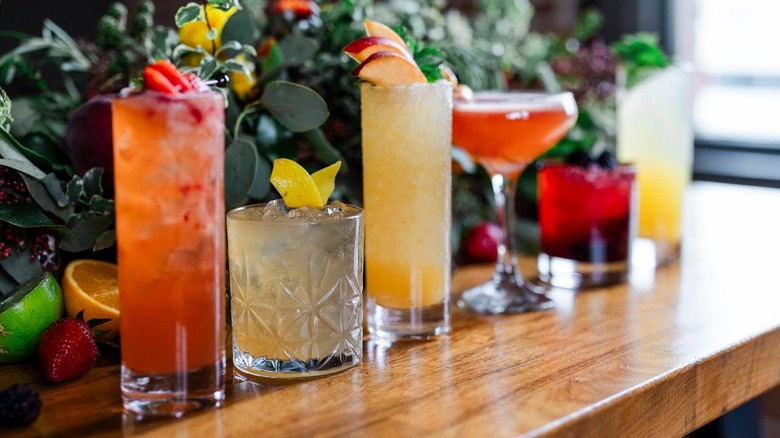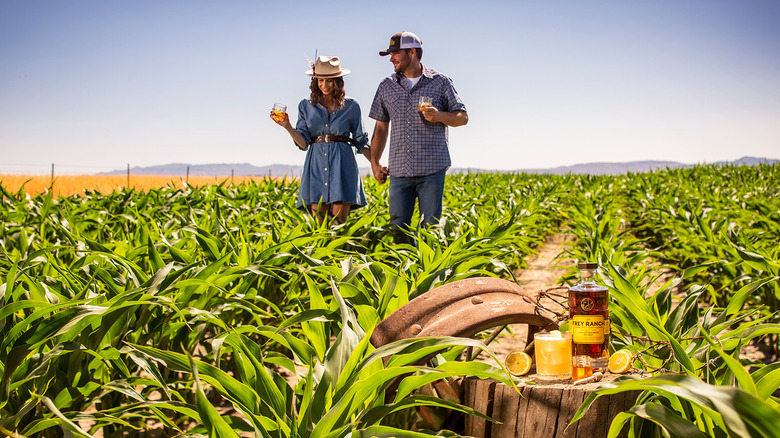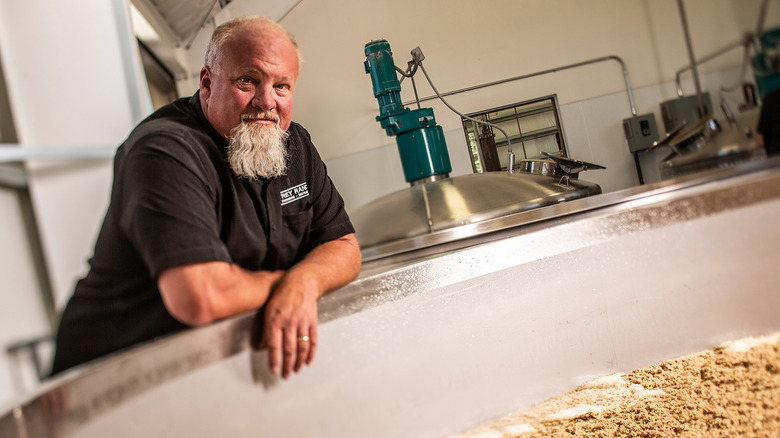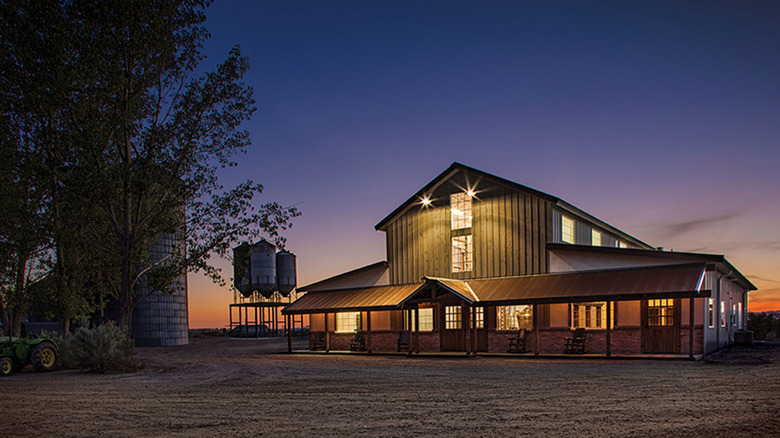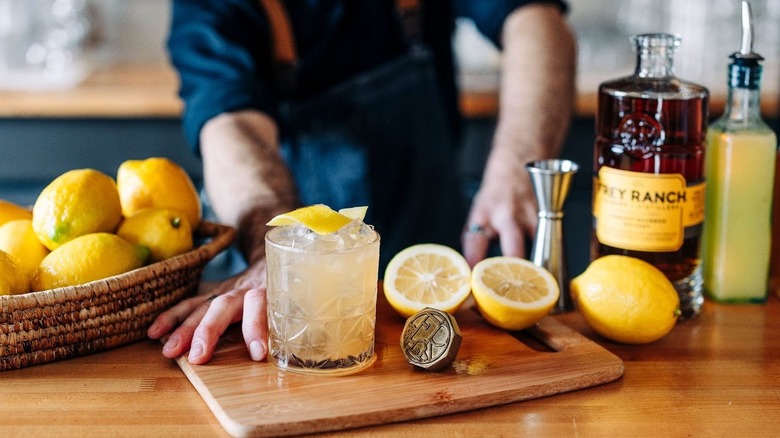What's In Your Glass? The Ingredients That Go Into Whiskey And Why Quality Is Key
Sponsored Content. The sponsor may receive a commission on purchases made from links.
In an industry where corporate giants monitor their whiskey to an obsessive degree, there's one distiller putting huge emphasis on everything that happens before most others even get started. Frey Ranch Distillery is not only one of the biggest whiskey producers in the western United States, but it also grows its own grains. That means the Nevada distillery is one of the very few whiskey makers that can track each element of its distillate and truly call itself "Farm-to-Glass." It's a particularly poignant philosophy come spring, when the earth reawakens and it's time to plant its carefully selected breeds of rye, corn, wheat and barley.
This vertical production is both the source and result of the Frey family's focus on high quality and ecologically sound production. It's an ethos heralded by the message at the bottom of every bottle of Frey Ranch Distillery whiskey: "Be good to the land, and the land will be good to you." That's no pithy marketing ploy. Frey Ranch knows the life story of every grain in its Farm-to-Glass bottles and signature cocktails, which means you can also enjoy knowing exactly what you're sipping.
Quality is Frey Ranch Distillery's bedrock
Colby Frey and his wife, Ashley, describe their whiskey as "Farm-to-Glass" because they have full custody over every aspect of its production from terroir to take-home. Everything in a bottle of Frey Ranch Distillery whiskey was created to spec onsite, even when it makes production more expensive or the process more complex.
"We could probably buy malt way cheaper than it costs us to make it ourselves," Frey says, "but we want to have total control. We want it to be our grain, so we need to malt our barley."
That focus on precision drives every step of the production process, which is well underway long before it reaches the point where most distilleries start to consider their product and its ingredients. Constant soil testing ensures the grains have everything they need to become optimal whiskey mash, and if a crop needs amendments and fertilizer, the distillery uses its own production methods as much as possible to keep it hyper-local.
Once upon a time, all distillers were Farm-to-Glass producers. Farmers "would make [grain] into whiskey because that was a way for them to extend the shelf life of their crops," explains Frey. But when a farm grows its crops with the intention of making whiskey first and foremost, it can tailor the development towards the most desirable tasting notes. This is especially true at Frey Ranch Distillery, where adjusting the irrigation system can speed or slow growth as needed in response to the weather.
The experiments are ongoing and evolving
While Farm-to-Glass cocktails might be an easy concept for consumers to get behind, it means Frey Ranch Distillery must test, evaluate, and revisit each step of the process to produce whiskey it's proud of. From hundreds of varieties of grain, Frey Ranch Distillery selects numerous types for different seasons, conditions, and properties, testing a plot to determine how well it grows, its starch content, and even what it mills like.
"If it doesn't taste good, I don't want to grow it," says Frey. Borrowing a phrase from the wine country not far to the west, he says, "You can't make good wine with bad grapes. It's the same with anything. Starting off with better inputs is the best way to get the best output."
With all of this research and development, you might expect Frey Ranch Distillery to safeguard its mash bills like so many distillers do, but its co-founder is actually excited to share his methods and means. "Nobody could copy us if they wanted to," Frey says. "They'd have to grow the same varieties in soil identical to our fields."
Locally grown, carefully cultivated
At Frey Ranch, the Farm-to-Glass philosophy includes what to keep out of your glass; not just what to put into it. If you know exactly where the grains that make up your whiskey come from, and what kind of water and fertilizer nourishes them, you can know for certain there are no compromising factors or controversial additives in one of Frey Ranch Whiskey's signature cocktails.
In the same spirit as the slow food movement, which encourages local consumption with minimal waste, Frey Ranch Distillery grows its crops slowly – literally. "Traditionally, anytime anything grows slower, it's just better," says co-founder Colby Frey. "We get a lot more consistency and a lot better quality from winter crops." Once again, it's counterintuitive, but these farmers deliberately encourage a slower, smaller yield. "We're not throwing on a bunch of nitrogen to make it grow fast and grow big and grow more yield and everything else. We want [to] take our time."
Finally, it's up to Mother Nature and Father Time
Frey Ranch Whiskey's Farm-to-Glass commitment requires time to produce a starchy plant, and it treats those starches gingerly by using a roller mill, which reduces the yield of each batch of whiskey, but avoids heating up the grains to cook before their time. The ranch distills and ages on site, in a barrelhouse left to the extremes of northern Nevada's climate.
The hard way isn't necessarily the better way, but you can certainly expect Frey Ranch Distillery to do the former if it means pursuing the latter. The end result is a whiskey you can truly trust because when it's all said and done, what you find in every signature cocktail is the farm's lasting legacy.
Experience the Frey Ranch story for yourself. The farm opens its doors every Saturday from noon to 4pm for complimentary tours and tastings. Bottles are available at retailers across the U.S. and they can even be purchased through the distillery's online whiskey shop and shipped directly to your door.
